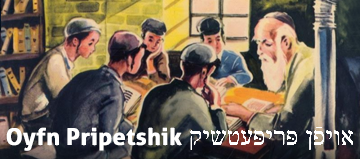
Jan Bart
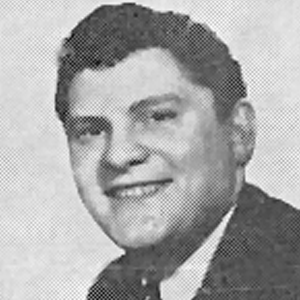
Jan Bart – January 26, 1919 – August 12, 1971 was a prominent Jewish-American lyric tenor, humorist and raconteur who bridged the gap between the wonderfully rich music of European Jewry and American musical tastes.
Bart was born Avram Sholom (Sol) Strauser in Sambor, Poland (now Sambir, Ukraine). His family owned a bakery, and as a very young child, he would stand on a stool and sing to the customers. By the time he immigrated with his family to America in 1930 at age 11, he had already become a cantor and continued singing at religious services at various synagogues in Greater New York area.
At age 17 he wanted to become a contestant on the renowned Major Bowes Amateur Hour radio show, the American Idol of its day and one of the most popular programs broadcast in the United States in the 1930s and 1940s. When he could not get an appointment, he and his high school friend Sid Bernstein went to the offices, found a piano, and accompanied himself to an aria from Pagliacci. Major Bowes walked in and was so taken with his voice that he completely changed the following Sunday’s scheduled program to put him on. He won the contest and with it the opportunity to travel around the country with the Major Bowes’ touring group, thus supporting his family during the Depression. From there he went on to appear in nightclubs, cabarets, and theaters throughout the United States, including the Copacabana in Miami Beach, the Latin Quarter in New York, the Last Frontier in Las Vegas and New York’s famed Palace Theater.
Having been rejected from the Army for medical reasons, he contributed to the war effort by helping to sell War Bonds and singing for the troops.
Bart recorded for RCA and Columbia among others, including a rendition of “We’re in Love, We’re in Love” with the Ray Charles Chorus, and later under his own label, Janson Records. He was a member of ASCAP (The American Society of Composers, Authors And Publishers) starting with his own composition, “Ecstasy” that he penned at age 20.
Through the 1940s and ‘50s he was a regular on Yiddish radio shows, including the American-Jewish Hour, Yiddish Melodies in Swing’‘ and The American-Jewish Caravan of Stars on WHN and WMGM radio, along with the likes of the Barry Sisters, Molly Picon and Mickey Katz, with famed composer Abe Ellstein at the baton. His “Jan Bart Show” on WEVD radio in New York ran for 18 years and his “Jan Bart Show’ on WATV-TV for six. His many television appearances included the Milton Berle Show and the National Muscular Dystrophy Telethon with Jerry Lewis. He starred in the Yiddish film “Catskill Honeymoon” in 1950.
When Israel became a state in 1948, Bart truly found his calling. He gave up his nightclub career to devote his whole life to the establishment and preservation of the State of Israel by working tirelessly for Israel bonds throughout the United States, Canada, Europe, and Australia. In the early days selling Israel bonds meant riding along the boardwalk in the back of an open station wagon, pleading into a megaphone the lessons of the war, that the existence of the State of Israel was central to the survival of the Jewish people.
In the early 1950s, while appearing in Miami Beach, he was asked to sing at the very first organized Israel Bond meeting. As gifted as he was a singer, he was an even better fundraiser, melding stories with his songs. His humor portrayed the new experiences of Jewish émigrés and stories from the mamaloshen. As Israel bond rallies developed into the organized, pre-sold events they are today, he always doubled and tripled the expected return. By his death at age 52 in 1971, he had raised more money for Israel Bonds than any other entertainer, having appeared at more than 2,200 performances over 20 years.
Throughout his life he continued to use his cantorial skills, conducting High Holiday services at the Riverside Plaza Hotel each fall and returning to the “Borscht Belt” (the Catskill Mountains of New York), where, like so many Jewish entertainers, he had gotten his start, to conduct Passover services at Green’s, Brown’s, Young’s Gap, and the Windsor hotels.
Through the 1950s and 60’s he made several recording albums, including Yinglish, old Yiddish melodies sung in English, and Fiddler on the Roof in Yiddish (see discography), for which he wrote the Yiddish lyrics. He published his biography with Barney Rubin, I Lost a Thousand Pounds (Oceanic Publications).
He was a popular entertainer at weddings and bar mitzvahs, and there wasn’t a family simcha that he and his wife, Lillian, didn’t sing for. He officiated as cantor at just about every family wedding. He wrote individual anniversary songs for each occasion and sang “When did she get to be a beauty?” for every wedding and “When did he grow to be so tall?” for every bar mitzvah.
In 1941 Bart married singer Lillian Robbins, an operatic contralto, who performed as a soloist at Radio City Music Hall. Their children are Judy Bart Kancigor (1943- ) food writer and author of “Cooking Jewish (Workman Publications) and Gary Bart (1946- ), Weight Watchers founder in Orange and San Diego Counties and film producer (“In the Name of the People” and ‘Invincible”). Lillian died in 2010 at age 93.
Bart died at age 52 in 1971 from complications of diabetes. He is interred at Mt. Ararat Cemetery in Farmingdale, NY.
David “Dudu” Fisher
 David “Dudu” Fisher (born November 18, 1951;) is an Israeli cantor and stage performer.
David “Dudu” Fisher (born November 18, 1951;) is an Israeli cantor and stage performer.
He is best known for his Broadway performance as Jean Valjean in the musical Les Misérables.
Cantorial career
The son of a Holocaust survivor, Fisher was born in Petah Tikva, Israel. He began studying at age 22, after the Yom Kippur War and his discharge from the army following 3 years of service. Fisher studied at the Tel Aviv Academy of Music, and studied privately under famous cantor Shlomo Ravitz. He then took up the cantorial position at the Great Synagogue in Tel Aviv, followed by 4 years in South Africa. For over 20 years, Fisher was the cantor at Kutsher’s Hotel in the Catskills during the Jewish high holidays. In 2005 Fisher became the Chief Cantor of New York Synagogue.
Les Miserables
After being mesmerised by the London performance of the 1980s hit musical, Fisher, despite no prior acting experience, requested the part in a Hebrew production of Les Misérables. He played its leading role, Jean Valjean, in Israel from 1987 to 1990, and made local fame.
He played the role on New York’s Broadway during the winter of 1993-4, and later at London’s West End, where he was invited to perform before Queen Elizabeth II. At both venues, Dudu was the first performer excused from Friday night and Saturday performances, as he is an Orthodox Jew and was not able to perform because of the Sabbath.
Other performance roles
Among Fisher’s other performances is his one-man Off-Broadway show, Never on Friday, an anecdotal work exploring the complications of his experience on Broadway as an observant Jew. He performed in many tours around Israel, the United States, and the world, particularly in Jewish communities, performing classics, as well as musicals, such as Over the Rainbow which toured Israel with Fisher performing 40 Broadway show tunes.
He performed for United States President Bill and Hillary Clinton, and for Britain’s Royal family, and the Thai Royal family.
He has also performed with the Israel Philharmonic Orchestra, conducted by Zubin Mehta, with a performance televised in France, and with the Baltimore Symphony Orchestra and the Queens Symphony Orchestra. He has recorded an album of show tunes with the London Symphony Orchestra. He was the first Israeli artist allowed to sing in the Soviet Union before perestroika.
Discography
In addition to his stage and synagogue performance, Dudu Fisher has released over 25 albums, including songs in Hebrew, Yiddish, and English, many classics and cantorial pieces, as well as music for children. He also sang the part of Moses in the Hebrew version of Steven Spielberg’s animated film, The Prince of Egypt.
- Hatikvah (2005)
- Lehitei Yiddish Beivrit (Yiddish hits in Hebrew) (2005)
- Coming to America (2004)
- Prayers On Broadway (2003)
- Songs Of My Heart (2002)
- Mamenyu (2001)
- Odecha (1999)
- L’tav Ulchayim V’lishlam (For Good, For Life & For Peace) (1997)
- Never On Friday (1996)
- Az Yashir David (1996)
- Beshem Hashem (In God’s Name) (1994)
- Showstoppers (1994)
- The Malavsky Family Songs (1993)
- Mamma Loshon (Mother Tongue) (1992)
- Velvet Tiger (1992)
- Golden Chasidic Song (1992)
- Gift (1992)
- Tonight, A Musical (1991)
- Stairways To Heaven (1990)
- Over the Rainbow (1989)
- Yiddishkiet (1988)
- Elokai Neshama (1985)
- Golden Yiddish Favorites (1985)
- Childhood Years
- Raisins and Almonds
- Songs Of The Living
- Yiddishe Mamme
- Dudu Fisher’s Kindergarten (DVD/VHS):
- (1998)
- We Are All Friends (2000)
- From The Heart And Soul (2001)
- The Friendship Trip (2002)
- It’s The Thought That Counts (2003)
- From The Mouth Of The Infants
- Shabat Shalom
- Shana Tova
- And Thou Rejoice In Thy Feast
Connie Francis
 Connie Francis was born Concetta Rosa Maria Franconero in the Italian Down Neck, or Ironbound, neighborhood of Newark, New Jersey. She is considered the most prolific and popular female rock ‘n’ roll hit-maker of the early rock era — the late 1950s to the early 1960s. After an appearance on Ford Startime, Francis was advised to change her name from Franconero to something more easily pronounceable — as well as to quit the accordion and focus on singing.
Connie Francis was born Concetta Rosa Maria Franconero in the Italian Down Neck, or Ironbound, neighborhood of Newark, New Jersey. She is considered the most prolific and popular female rock ‘n’ roll hit-maker of the early rock era — the late 1950s to the early 1960s. After an appearance on Ford Startime, Francis was advised to change her name from Franconero to something more easily pronounceable — as well as to quit the accordion and focus on singing.
Francis’ first single, “Freddy”, (1955) met with little success. Her next nine singles were also failures, and she began to consider a career in medicine. However, a cover version of the song “Who’s Sorry Now?” (1923) by Bert Kalmar and Harry Ruby launched Francis into super-stardom worldwide. She recorded the song at what was to have been her final recording session for MGM; the label was about to drop her owing to her previous singles’ poor sales. Francis has said that she recorded it at the suggestion of her father, who convinced her it stood a chance of becoming a hit because it was a song adults already knew and that teenagers would dance to if it were released with a more contemporary arrangement.
The gamble paid off. On January 1, 1958, the song debuted on Dick Clark’s American Bandstand television show, and by mid-year over a million copies were sold. In April 1958, “Who’s Sorry Now” reached number one on the UK Singles Chart and number four in the USA. This was followed by many other hits over the next decade, as Connie Francis became one of the most popular vocalists in the world.
As Francis explains at each of her concerts, she began searching for a new hit immediately after her 1958 single Who’s Sorry Now? became a success. She was then introduced to Neil Sedaka and Howard Greenfield, who played every ballad they had written to date, for Connie. After a few hours, Francis began writing in her diary while the two songwriters played the last of their ballads. After they finished their last song of the session, Francis told them that they wrote very beautiful ballads but that she considered them too intellectual for the young generation of the time. Greenfield then suggested to Sedaka a song they had written that morning for another girl group. Sedaka protested, believing that Francis would be insulted. Greenfield said that she hated all the other songs they had performed and that they had nothing more to lose. Sedaka reluctantly agreed to play Stupid Cupid with Greenfield for Francis. As soon as they finished playing the song, Francis told them that they had just played her new hit record. Francis’ song reached #14 on the Billboard charts. While Francis was writing in her diary, Sedaka asked her if he could read what she had written. After she refused, Sedaka was inspired to write The Diary, which was his first hit single. Through the rest of her early career Sedaka and Greenfield wrote many of Connie Francis’ hits such as Fallin and Where the Boys Are.
Connie specialized in downbeat ballads (often remakes of old standards) delivered in her trademark “sobbing” style, such as “My Happiness”, “I’m Sorry I Made You Cry”, “Among My Souvenirs”, “Together”, “Breakin’ In a Brand New Broken Heart”, and the Italian song “Mama”. However, she also had success with a handful of more upbeat, rock-and-roll-oriented compositions, such as “Stupid Cupid”, “Lipstick On Your Collar”, and “Vacation”.
Among Francis’ other notable performances were “In the Summer of His Years” (a tribute to slain U.S. President John F. Kennedy) and Bert Kaempfert’s “Strangers in the Night” (although the latter song is more often identified with Frank Sinatra). Both “Everybody’s Somebody’s Fool” and “My Heart Has a Mind of Its Own” went to number one on the Billboard music charts in 1960. In 1962, Francis had another number one hit with “Don’t Break the Heart That Loves You”.
Francis remade many of her hits in foreign languages, including “Everybody’s Somebody’s Fool” and her signature song, “Where the Boys Are”. Francis recorded in thirteen languages throughout her career: English, German, Swedish, Dutch, French, Spanish, Portuguese, Italian (and its dialect Neapolitan), Hebrew, Yiddish, Japanese, Latin and Hawaiian. During a concert at the Golden Stag Festival in Brasov, Romania in March 1970, Francis performed live in Romanian. Francis’ biggest hit album in the U.S. was 1959’s Italian Favorites; she followed it with several more albums of Italian songs over the years, as well as collections of Spanish-language and Jewish songs, among others.
In the 1960 motion picture Where the Boys Are Connie was able to highlight her acting talents to a broader range of audiences. During the first half of the 1960s, she starred in three additional films: Follow the Boys (1963) (the title song of which became a No. 17 Billboard single for Francis), Looking for Love (1964), and When the Boys Meet the Girls (1965).
In 1960, Francis became the youngest headliner to sing in Las Vegas, where she played 28 days a year for nine years. In 1961, she starred in her own television special on ABC television sponsored by Brylcreem titled Kicking Sound Around, singing and acting alongside Tab Hunter, Eddie Foy Jr. and Art Carney. Francis appeared on the Ed Sullivan Show on July 1, 1962 with French singing star Johnny Hallyday in a show that was taped at the famous Moulin Rouge nightclub in Paris, France. On July 3, 1963, she played a Command performance before Queen Elizabeth II at the Alhambra Theatre in Glasgow, Scotland. By 1967, Francis had 35 U.S. Top 40 hits, three of which were number ones. During the height of the Vietnam War in 1967, Connie Francis performed for U.S. troops. Francis ended her recording career in 1969. She returned in 1973 with “The Answer”, a song written just for her, and soon began performing again.
Francis has always been a great fan of country music, and recorded several albums of country standards during her pop career. In 1969, she had a modest country hit with, “The Wedding Cake.” She appeared on the country charts again in 1982 with “There’s Still a Few Good Love Songs Left in Me.” Several country singers found chart success remaking Francis’ pop hits for the country market, including Marie Osmond (“Who’s Sorry Now” in 1975), Susan Raye (“My Heart Has a Mind of Its Own” in 1972), Margo Smith (“Don’t Break The Heart That Loves You” in 1978), and Debby Boone.
Francis’ autobiography, Who’s Sorry Now? was published in 1984.
In 2000, “Who’s Sorry Now” was named one of the Songs of the Century. Her latest CD The American Tour contains performances from recent shows. In late December 2004, Francis headlined in Las Vegas for the first time since 1989.
In March and October 2007, Francis performed to sold-out crowds at the Castro Theater in San Francisco.
Source: Wikipedia
Denis Cuniot
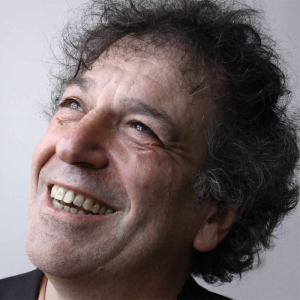
Pianist, composer, storyteller, Denis Cuniot is one of the main instigator of the renewal of French klezmer music. He published to this day around 20 discs, in solo, duo, trio or in a group (in particular with the Orient Express Moving Shnorers that he created in 1995 with Philippe Briegh).
From his first collaborations with the clarinet player Nano Peylet to the Yiddish songs of Bruno Girard (from the band Bratsch), from the jest of the clarinet player Yom to the rock-punk performances of the guitarist David Konopnicki, Denis Cuniot explores since the beginning of the 1980’s the fertile soil of klezmer music. His goal: to make sound a vanished world, and imagining the evolution that klezmer music could have had if it had survived in its original lands ; that music becomes a source of inspiration, invention and improvisation for musicians around the world, true music standards… Like jazz.
Denis Cuniot dares to mix jazz, rock, African music or even Indian iemj.org/…t/biographies/denis-cuniot-1953raga with klezmer music. His unique way of playing the piano is immediately recognizable.
Denis Cuniot, the inventor of klezmer piano in the French way. An exciting program where a man reveals himself through his music…
Klezmer music pianist, composer and storyteller
Pianist of jazz and improvised music, Denis Cuniot is one of the main initiators of the revival and recognition of klezmer music in France.
With a solid background in classical music, Denis Cuniot is at the same time music teacher, director of a music conservatory, and pianist of jazz and improvised music.
From 1983 on, with his encounter with Nano Peylet (clarinet player in the band Bratsch), he becomes one of the main initiators of the revival and recognition of klezmer music in France.
Yiddish is the mother tongue of his mother, Bluma Mélélat, born in Warsaw in 1929. But she did not pass the language to her son, because she wished for him integration and assimilation, linked to the need of putting in distance her pains, particularly the fact of being a hidden child and the vanishing of almost all her family. We can ask ourselves if it’s not the absence of transmission that pushed Denis Cuniot on the path of klezmer music (“Kli-Zemer”, literally instrument of the voice, of the singing), in order to compensate this absence. A music for people to hear Yiddish, without pronouncing it…
Main contributions to klezmer music and Yiddish musical culture
In 1984, he creates with Nano a musical show Notes de voyages, Voyages de notes based on a story of Chelm : When Shlemiel goes to Warsaw, known also under the name Gueitzel le curieux. With this story, he discovers the genius of Yiddish literature, and meets several Yiddish teachers in order to get the translation.
After the recording of three albums, with his Peylet-Cuniot duo: Musique des Klezmorim et de leurs descendants, Musique Klezmer d’hier et de demain and L’Amour des Niguns, Denis Cuniot takes part to the recording of another disc: Nano Peylet and friends, in 1993, gathering several duos around Nano Peylet.
In 1995, Denis Cuniot creates with Philippe Briegh the band Orient Express Moving Schnorers, and records the first disc of this ensemble: Les lendemains de la veille, in 1996.
After leaving this band in 1998, he creates Les rendez-vous au métro Saint Paul, based on the short stories by Cyrille Fleischman, a solo performance where he is storyteller and piano player.
In 2000, with the young virtuoso clarinet player Yomguih (or Yom) he creates a duo and records the disc The Golem on the Moon.
One must notice also that in 2005, he takes part in the creation of the Klezmer Brass Band of Ile de France Regiongathering more than 40 musicians, amateurs and pros. The repertoire is constituted of klezmer music and Yiddish songs.
In 2007, his disc Confidentiel Klezmer will know great success from the public and the press.
From 2008 to 2011, he participates to Yom’s project, New King of Klezmer Clarinet.
With Bruno Girard in 2008, he creates the duo YAT, Yiddish Atmospheric Touch, which is dedicated to Yiddish songs. Their first CD Mir Geyen in which we can hear the song Brooklyn by the sea by Mort Shuman, translated in Yiddish, is released in 2011.
In 2012 is released his second solo disc, Perpetuel Klezmer.
In 2013, he creates a duo with David Konopnicki on the electric guitars, and pays tribute to todays composers of klezmer music, in particular in France and the United States.
In 2014, to celebrate his 30 years of implication in Yiddish culture and klezmer music, he performs a 6 hour long concert: the Râga Klezmer with a repertoire going through two centuries of klezmer music.
In 2016, he receives the Max Cukierman Prize for his contribution in Yiddish culture
Bruno Girard
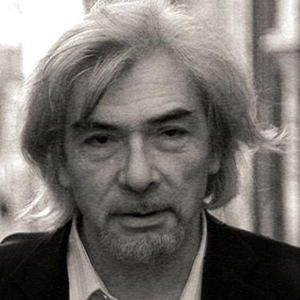 Bruno Girard is, among other things, the violinist and singer in the ensemble Bratsch. The virtuoso pianist Denis Cuniot has devoted his talent to Klezmer music, which he has notably played in solo (Confidentiel Klezmer), and duets, with Nano Peylet (clarinet) and, more recently, Yom.
Bruno Girard is, among other things, the violinist and singer in the ensemble Bratsch. The virtuoso pianist Denis Cuniot has devoted his talent to Klezmer music, which he has notably played in solo (Confidentiel Klezmer), and duets, with Nano Peylet (clarinet) and, more recently, Yom.
 
Leibele Jinich
 Leibele Jinich was born in 1933 in Monigotes, Argentina.
Leibele Jinich was born in 1933 in Monigotes, Argentina.
He was awarded a scholarship in the Superior Institute of Jewish Religious Studies of Buenos Aires where he graduated as Professor of Hebrew Sciences in 1952.
In Majón Lelimudei Hayadút, he receives his Semijá in Hazanut, to finish there the Bachelor in the Yiddish and Hebrew languages. At the same time, he studied his vocal and musical studies at the Conservatory, under the guidance of the eminent teacher Artur Volken, of the Vienna Opera, and director of Soloists at the Teatro Colón in Buenos Aires, as well as the distinguished Maestro Cosimo Mao of Florence, Italy. His tutors were the chief rabbis of Argentina, Dr. Jacob Fink, and Dr. Guillermo Schlesinger
He made specialization as Hazan with Hazan Abraham Blejarovich, Obercantor of the Israelite Congregation of the Argentine Republic, where he worked as Assistant Cantor.
In 1956, the Jewish Community of Mexico invited him to officiate in the services of Major Festivals, returning later to work in this country.
In 1961 he joined the group of founders of the then Bet-El Congregation, and a singular union began between Leibele Jinich and herself.
He visits frequently, with the consent of Bet-El, several communities of Central America, in his capacity as Liturgical Cantor. It offers auditions of traditional Jewish music in Radio Universidad and in the National Library.
He is a distinguished member of the Cantors Assembly of America, who honored him with the title of “Guest Cantor” at the 1976 convention.
He has composed liturgical interpretations that are sung by the vast majority of attendees to the various services, such as “Hinení”, “Unetane Tokef”, and “Kol Nidre” on Yom Kippur.
He has recorded several albums, and especially the CD dedicated to Kabalat Shabat, which was an unusual success.
He currently holds the title of Hazan Emeritus of the Bet-El Community of Mexico.
Jan Peerce
1904 – 1984
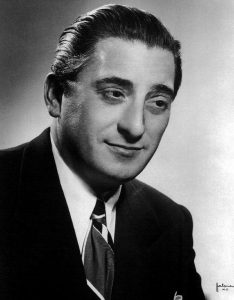
By Hurok Attractions-photographer:Halsman, New York (eBay item photo front photo back) [Public domain], via Wikimedia Commons
In 1932 he was hired as a tenor soloist with the Radio City Music Hall company. Thanks to its radio broadcasts and stage programs, Peerce soon had a nationwide following. This led to concert engagements, and then he made his operatic debut in May 1938 in Philadelphia as the Duke of Mantua in Rigoletto, followed by his first solo recital in New York in November 1939.
The legendary maestro Arturo Toscanini heard him and found him to be the tenor he had sought to sing operatic and choral works with the NBC Symphony Orchestra. The recordings made during, or following, the NBC broadcasts are among the outstanding musical legacies of our time. Toscanini was reportedly pleased with Peerce’s professionalism, as well as his extraordinary musical talents; many have said that Peerce may have been Toscanini’s “favorite tenor” during the Maestro’s 17 years at NBC.
Peerce made his debut with the Metropolitan Opera on November 29, 1941, singing Alfredo in Verdi’s La traviata. He sang also the parts of Cavaradossi in Tosca, Rodolfo in La bohème, and in Gounod’s Faust. He was hailed by the critics as the “All-American successor to the ‘greats’ of opera’s almost extinct ‘Golden Age.'” In 1946 he sang and recorded Puccini’s “Tosca” with soprano Grace Moore and baritone Lawrence Tibbett at the Met.
In 1943 he appeared in the OWI film, Hymn of the Nations, with Toscanini, the NBC Symphony Orchestra, and the Westminster Choir in a performance of Verdi’s seldom-heard choral work. Filmed in NBC Studio 8-H, the performance has been issued on video-cassette and DVD.
During the 1950’s Mr. Peerce performed regularly as a featured soloist before audiences of over 14,000 guests under the conductor Alfredo Antonini at the landmark Lewisohn Stadium in New York City. These Italian Night open air concerts featured the Philharmonic-Symphony Orchestra and the Lewisohn Stadium Orchestra along with such operatic luminaries as Richard Tucker, Robert Merrill, and Eileen Farrell.
In 1956 Peerce made a sensation in Moscow as a musical “cultural exchange” ambassador, being the first American to sing with the famed Bolshoi Opera. He remained on the roster of the Metropolitan until 1966, appearing again in 1966-1967. He also taught a master class. In 1971 he made his Broadway debut as Tevye in “Fiddler on the Roof.” He continued to make occasional appearances until his retirement in 1982, remaining in fine voice. He was the brother-in-law of fellow Jewish-American tenor Richard Tucker. Peerce was also at home on the concert stage and in solo recital.
Peerce recorded almost exclusively for RCA Victor as a “Red Seal” artist. Among his first recordings was as a featured soloist in Nathaniel Shilkret’s 1939 tribute album to Victor Herbert. That same year Peerce was the tenor soloist in Toscanini’s broadcast concert of Beethoven’s Ninth Symphony, but it would be years before the Maestro would approve one of his performances of that symphony for commercial release.
Peerce sang in Toscanini’s 1944 broadcasts of Beethoven’s Fidelio, followed by the complete performances of Verdi’s La traviata, Puccini’s La bohème, and Verdi’s Un ballo in maschera (with Herva Nelli), all eventually released on LP and CD. (Peerce did not sing in Toscanini’s broadcasts of Verdi’s Otello, Aida, or Falstaff.) He also sang in the Madison Square Garden concert in 1944, which featured the final act of Rigoletto with Toscanini conducting the combined New York Philharmonic and NBC Symphony Orchestra; this performance was recorded and also released on LP and CD. In 1952, he participated in Toscanini’s last performance of Beethoven’s Ninth Symphony, which the Maestro finally allowed to be released commercially on the RCA Victor label. His best-selling recording, however, was of a popular song, The Bluebird of Happiness.
He made several stereophonic recordings in the 1950s and 1960s for RCA, then gradually curtailed his recording projects. Most of his major recordings have been released on CD.[13]
For Columbia Masterworks Records, Peerce sang the title role in a 1963 recording of selections from Sigmund Romberg’s The Student Prince, opposite Roberta Peters, and also featuring Giorgio Tozzi. This has not yet been released on CD.
He died December 15, 1984 in New York City.
The Robert Spiro Singers
Bob was born in Chicago in 1918 to Charlie and Jennifer Spiro as a first generation American. He was a cantor for over 50 years, and married for nearly 70 years. He had two sons, Claude and Tom.
He and his wife moved to NYC after WWII during which he was a Captain in the US Army. He was a successful singer and union exec until he retired in the late 1990s. He was well known first for being a consummate professional, and later, to fight for the rights of performers. Singer of stage and studio, and performer’s union executive/
Benedict Silberman
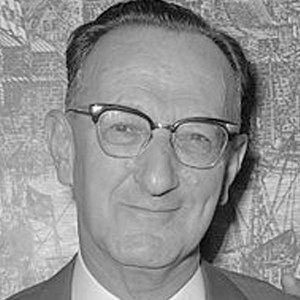
Benedict Silberman, originally Boruch Hirsch-Benedigton Silberman (December 5, 1901 Helsinki, Finland – December 11, 1971 Hilversum, Netherlands), was a Dutch composer and conductor of Austrian Jewish descent.
Silberman was the son of an Austrian violinist working in Helsinki who settled in Amsterdam. Silberman studied piano with Jean-Baptiste de Pauw and composition with Sem Dresden at the Amsterdam Conservatory. He wrote a piano concerto (1924) at the end of his studies. A year later he composed a violin concerto. He left for Berlin where he played as a violinist and arranged light classical musical, preferentially Viennese operettas. In 1944 he composed his own operetta Het Rozeneiland (The Island of Roses). He had contact with Franz Lehár, Robert Stolz and Emmerich Kálmán and toured Europe with the dance orchestras of Paul Godwin, Marek Weber and Dajos Bela.
In 1936 he returned to the Netherlands and became pianist in the AVRO radio orchestra of Kovacs Lajos. In 1938 he became conductor of the VARA radio orchestra. In 1948 he was asked to create a radio orchestra specialized in light classical music; he led this Promenade Orkest from 1949 till 1967. In 1965, he won the Golden Harp for his contributions to Dutch music.
in 1965 Shlomo Carlebach published the album In the Palace of the King, Silberman arranged and conducted the chorus and symphony orchestra.
